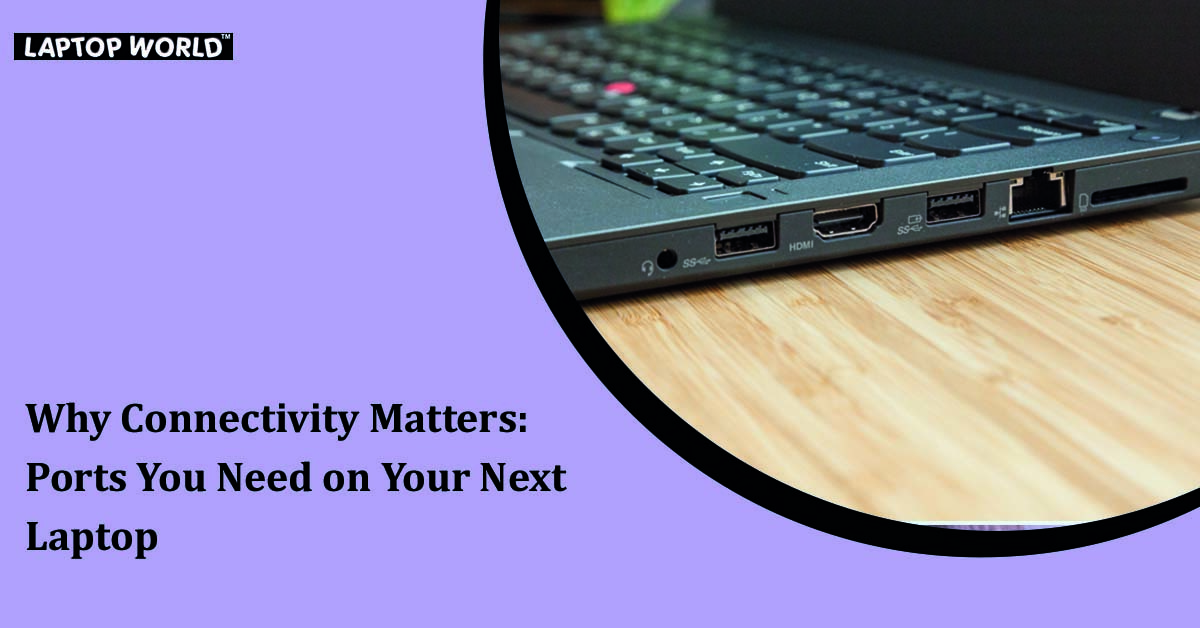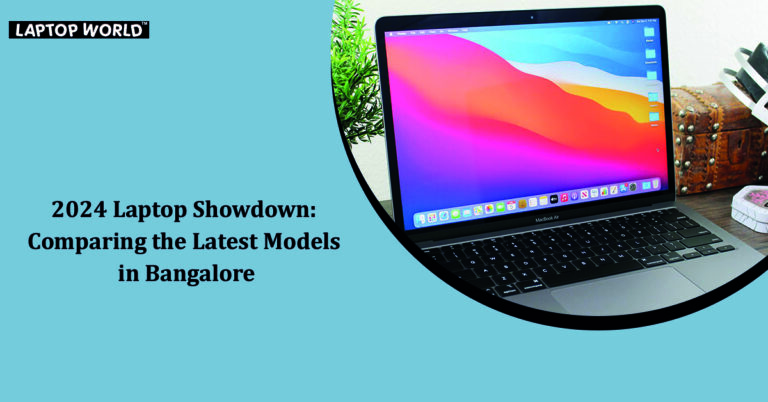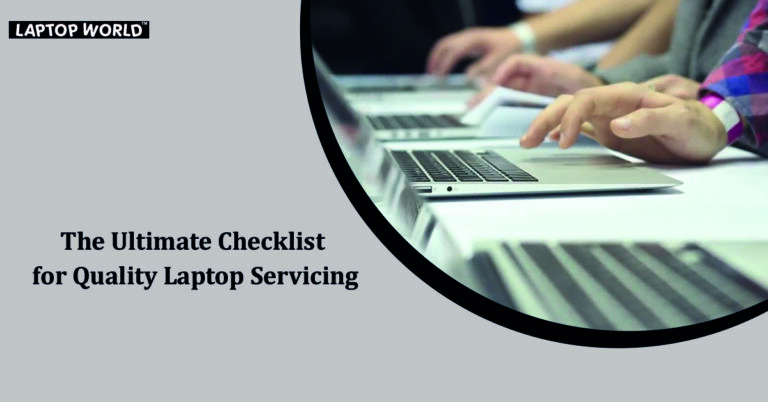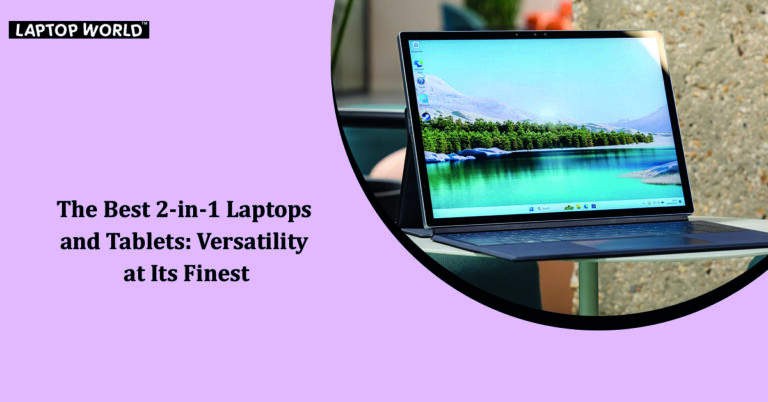Why Connectivity Matters: Ports You Need on Your Next Laptop
If you’ve decided to buy a new laptop, there are different factors to think about before making your purchase. While analysing the CPU, GPU, RAM, and storage is important, there’s another critical aspect to take into account — ports. Ports are the holes along the sides that let you plug in all your peripherals. You…
If you’ve decided to buy a new laptop, there are different factors to think about before making your purchase. While analysing the CPU, GPU, RAM, and storage is important, there’s another critical aspect to take into account — ports.
Ports are the holes along the sides that let you plug in all your peripherals. You don’t want to buy a PC with an old-school USB when you truly need Thunderbolt 3. When shopping for a new laptop, keep the following ports in mind.
Laptop World: Discover the best deals on top brand laptops in Bangalore today!
USB 3.1
Not to be confused with USB 2.0 or even 3.0, USB 3.1 is the latest standard for USB Type-A ports. This is the big rectangular port where you connect your mouse, USB headset, or external hard drive. USB 3.1 launched back in 2013 and offers incredible transfer speeds — up to 10 gigabits per second. In contrast, USB 3.0 and 2.0 deliver speeds of 5 Gbps and 480 Mbps, respectively.

But not so fast! The USB Implementers Forum, a nonprofit that promotes the use of the technology, has renamed USB 3.0 to USB 3.1 Gen 1, while USB 10Gbps has been renamed to USB 3.1 Gen 2. So, how can you tell the difference between the two ports? You’ll have to look at the specs, where manufacturers should disclose the speed. However, most USB 2.0 ports are grey, whereas USB 3.0 and higher are blue.
Laptop World: Discover the best deals on top brand laptops in Bangalore today!
USB Type-C
As laptops have become slimmer, not all can support a USB Type-A port. Then there’s USB Type-C. This small, 0.3 x 0.1-inch port is found on the sides of many laptops.
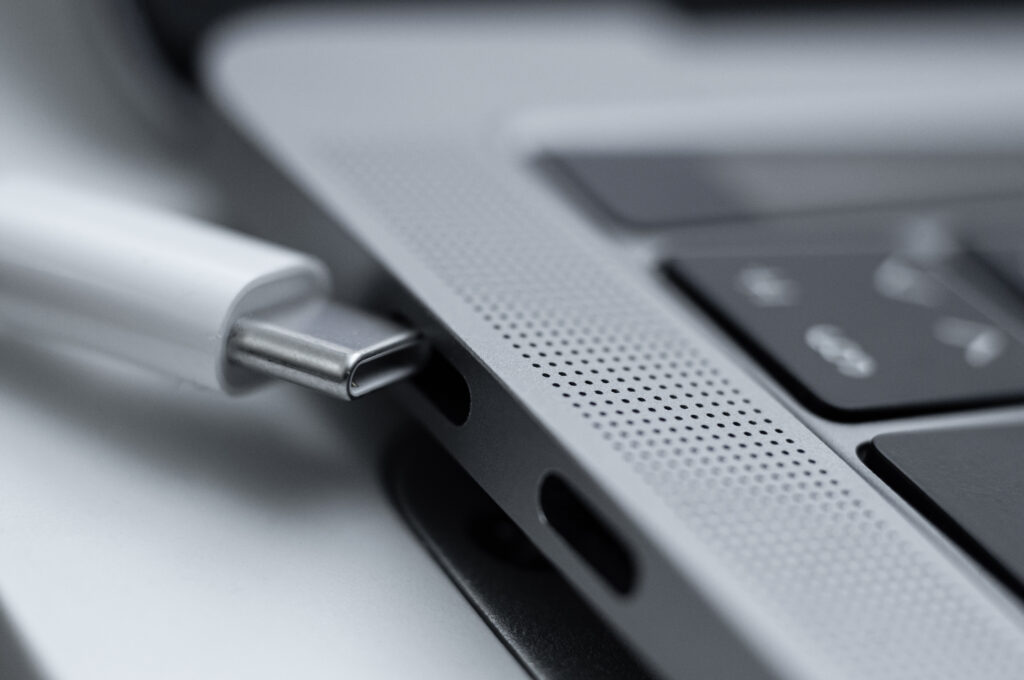
Type-C, as a USB 3.1 port, is capable of 10 Gbps transfer speeds and can offer up to 100 watts of power, which is useful for powering laptops. The connector is also bidirectional, so a peripheral like a Razer Power Bank can charge the notebook. While there are Type-A-to-Type-C connectors, having Type-C on both ends saves the need to struggle for the “right” end because Type-C is reversible.
Laptop World: Discover the best deals on top brand laptops in Bangalore today!
Thunderbolt 3
At first glance, you might mistake a Thunderbolt 3 port for a USB Type-C port, and you’d be right. While all Thunderbolt 3 ports can act as USB Type-C ports, regular Type-C ports cannot perform the same functions as Thunderbolt 3. Type-C can reach transfer speeds of 10 Gbps, whereas Thunderbolt 3 can reach speeds of 40 Gbps if the connection is no longer than 1.6 feet. If the line is longer, the speed is reduced to 20 Gbps, which is still plenty fast.
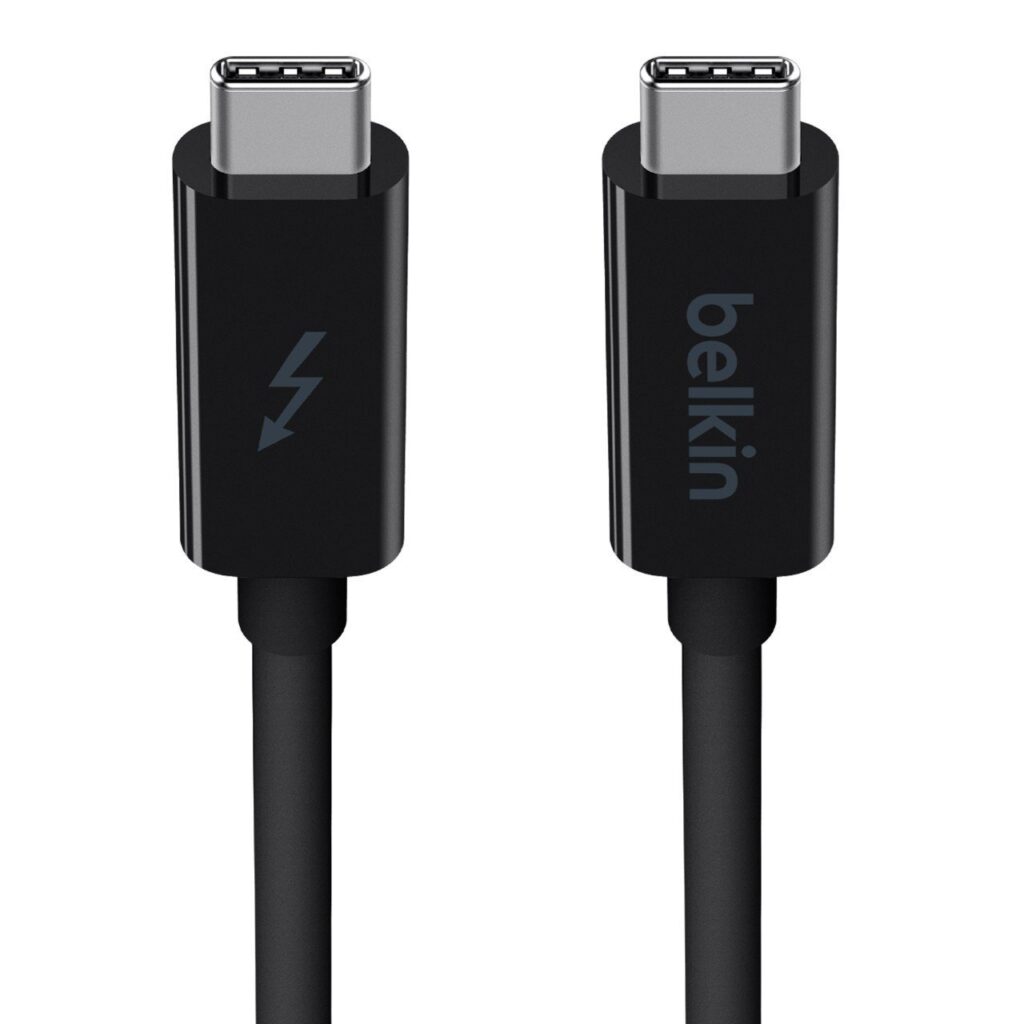
Thunderbolt 3 is reversible and bidirectional in terms of power transfer, just like Type-C. However, unlike Type-C, Thunderbolt 3 can daisy-chain, which means you may connect a number of devices together as long as they all have Thunderbolt 3.
Laptop World: Discover the best deals on top brand laptops in Bangalore today!
Headset
Depending on the laptop, you might find headphones, microphones, S/PDIF, and audio output jacks. However, most notebooks have consolidated all those connections into a single multitasker, the headset jack. The simple 3.5mm audio connector, often called a combination headphone/microphone jack, performs triple duty, supporting functions for both devices as well as speaker-out, which allows you to connect external speakers.
Laptop World: Discover the best deals on top brand laptops in Bangalore today!
HDMI
Sometimes, you need more screen space than your notebook can provide. However, you’ll need an HDMI port to move on to better and bigger panels. HDMI, which stands for High-Definition Multimedia Interface, allows your laptop to send compressed or uncompressed audio and video data over a single cable. It’s the strange polygonal-shaped port on the back of your game consoles, television, and cable boxes. If you enjoy virtual reality, you’ll need HDMI to support your Oculus Rift, Windows Mixed Reality Headset or HTC Vive.
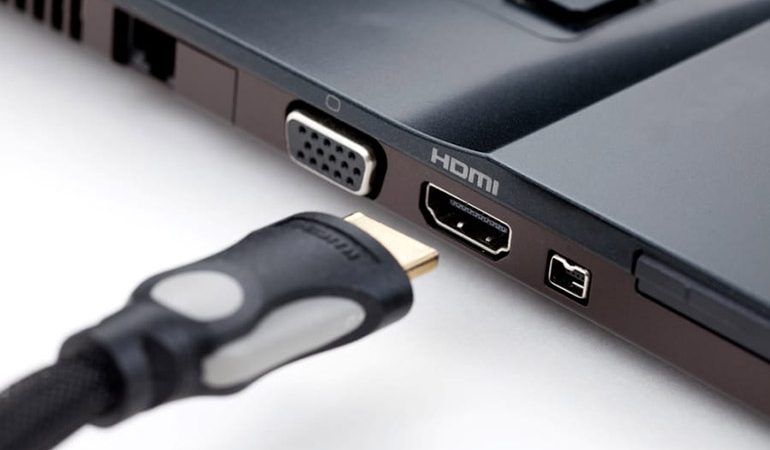
Several iterations of HDMI ports have come in and out of favour throughout the years. Most computers now feature either an HDMI 1.4 or 2.0 connector. The 1.4 version supports full HD (1920 x 1080) content at 120 Hz as well as 4K (3840 x 2160) content at 24, 25, and 30 Hz. In addition, it supports a number of 3D formats, as well as the Adobe RGB colour gamut.
Compared to HDMI 1.4, HDMI 2.0 supports 4K video running at 60Hz and improved 3D support. The format supports high dynamic range (HDR), which allows for highly vibrant images on HDR-ready displays. It also boosts bandwidth, increasing transfer rates from 10.2 Gbps to 18 Gbps.
Additionally, HDMI 2.0 can maintain dual video streams to the same panel, so that several people can watch two different things at the same time in split-screen mode – think of picture-in-picture mode, but better. It can also transmit 32 audio channels, a significant improvement over HDMI 1.4’s eight, and is compatible with Dolby Atmos. Thus, with the right home theatre setup, you can create cinema-grade, 3D audio in your home.
Laptop World: Discover the best deals on top brand laptops in Bangalore today!
About Laptop World
Laptop World is your one-stop shop to get your hands on that perfect work and gaming laptop with all kinds of unique specifications. We offer laptops at different price points from well-known brands like Lenovo, Dell, HP, Apple, and Asus. All you need to do is visit the Laptop World store and choose the one based on your budget, required features, and promising technology that suits your taste.

